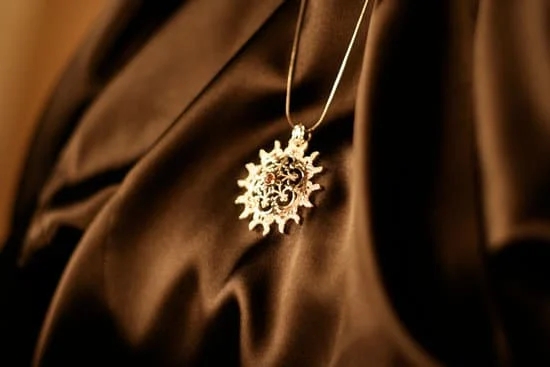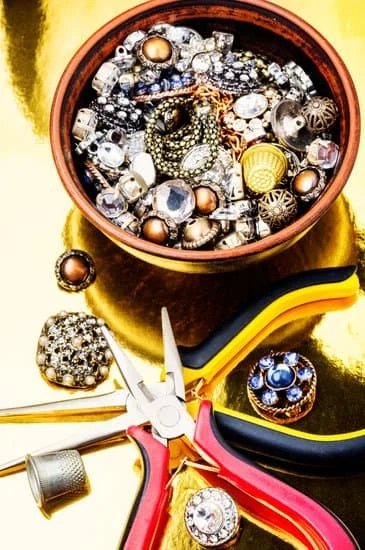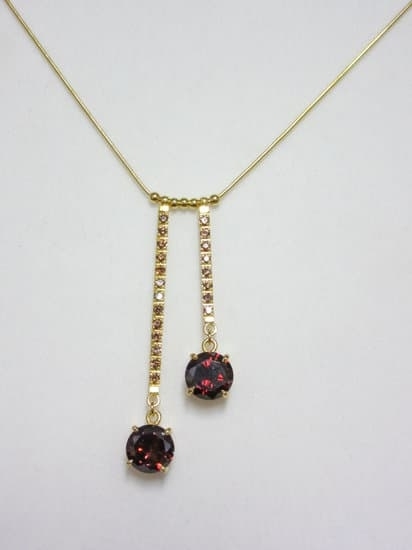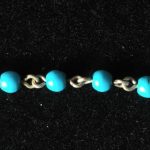The history of jewelry in Europe dates back to ancient civilizations, where intricate and ornate pieces were crafted for adornment and symbolism. From the influence of civilizations like the Greeks and Romans to the opulence of the Renaissance period, European jewelry has evolved through the centuries, reflecting social, cultural, and artistic changes.
The rich history of European jewelry is a fascinating journey that weaves together artistry, craftsmanship, and cultural influences. From ancient times to the modern era, jewelry in Europe has been shaped by royalty, nobility, renowned designers, and evolving techniques and materials.
In this article, we will delve into the captivating history of jewelry in Europe. We will explore how ancient civilizations influenced European jewelry, examine the pivotal role of royalty and nobility in shaping its evolution, and discuss the symbolism and meanings behind these exquisite creations. Additionally, we will highlight famous European jewelry designers and their impact on the industry, as well as take a closer look at the modern European jewelry industry and trends.
The Influence of Ancient Civilizations on European Jewelry
Another impactful civilization in shaping European jewelry was the Romans, who were known for their love of luxury and opulence. Roman jewelry was characterized by elaborate designs, incorporating colored glass, pearls, and intricate metalwork. The Romans also introduced new techniques, such as granulation and filigree, which had a lasting impact on European jewelry making.
Furthermore, the influence of ancient Egyptian jewelry cannot be overlooked in the history of jewelry in Europe. The use of scarabs, amulets, and symbolic imagery by the Egyptians left an indelible mark on European jewelry design. The discovery of King Tutankhamun’s tomb in the early 20th century sparked a renewed interest in Egyptian motifs and materials among European jewelers.
Overall, the history of jewelry in Europe has been profoundly influenced by these ancient civilizations, whose artistic achievements continue to inspire contemporary European jewelry designers.
| European Jewelry Influence | Ancient Civilization |
|---|---|
| Intricate designs using gold, silver, and precious gemstones | Ancient Greeks |
| Elaborate designs with colored glass and pearls | Romans |
| Use of scarabs, amulets and symbolic imagery | Ancient Egyptians |
The Renaissance and the Rebirth of Jewelry in Europe
The Renaissance period in Europe marked a significant revival and renaissance of the arts, including jewelry-making. During this time, there was a renewed focus on creativity, innovation, and opulence, which greatly influenced the design and production of jewelry. The history of jewelry in Europe during the Renaissance era saw a shift towards more intricate and ornate pieces that were often inspired by classical motifs and themes.
One of the most important developments during the Renaissance was the use of gemstones in jewelry. The popularity of colored gemstones such as rubies, sapphires, emeralds, and pearls soared during this period. These precious stones were often incorporated into elaborate designs that showcased the expertise of European jewelers.
The craftsmanship of European jewelry-makers also reached new heights during the Renaissance. Goldsmiths and silversmiths honed their skills to create intricate filigree work, enamel detailing, and delicate metalwork that adorned necklaces, earrings, rings, and other accessories. This emphasis on craftsmanship set a standard for European jewelry that continues to be revered to this day.
| Historical Milestone | Impact |
|---|---|
| Use of Gemstones | Colored gemstones became increasingly popular in European jewelry design. |
| Craftsmanship Development | The focus on intricate metalwork and detailing set a standard for European jewelry-making. |
The Role of Royalty and Nobility in Shaping European Jewelry
Throughout history, European royalty and nobility have played a significant role in shaping the evolution of jewelry in Europe. Their influence on design, materials, and trends has had a lasting impact on the artistry of European jewelry.
Patronage of the Arts
Royalty and nobility have often been patrons of the arts, including jewelry making. They would commission pieces from skilled craftsmen, providing them with both resources and inspiration to create elaborate and exquisite jewelry. This patronage not only elevated the status of jewelry makers but also contributed to the innovation and creativity in European jewelry design.
Royal Treasures
The collections of European royal families boast some of the most stunning and valuable pieces of jewelry in history. These treasured items often reflected the wealth, power, and taste of these ruling classes. Their ownership of such magnificent jewels not only symbolized their prestige but also set trends for what was considered fashionable or desirable in European society.
Impact on Design
Royalty and nobility had a direct impact on the design of European jewelry. From crowns to tiaras, from necklaces to brooches, the preferences and styles favored by royalty often filtered down through society as aspirational symbols of beauty and elegance. The use of specific gemstones or motifs favored by royal families became widely popular among affluent Europeans, perpetuating certain design elements throughout different eras in history.
As we delve into the history of jewelry in Europe, it becomes evident that the influence of royalty and nobility has deeply shaped its trajectory. Their patronage, treasured collections, and impact on design have left an indelible mark on European jewelry artistry throughout centuries.
The Evolution of Jewelry Techniques and Materials in Europe
Jewelry craftsmanship in Europe has a rich history that dates back centuries. The evolution of techniques and materials used in European jewelry has been influenced by various factors, including the availability of resources, cultural exchanges, technological advancements, and changes in artistic tastes.
Throughout the history of jewelry in Europe, artisans have utilized an array of materials to create stunning pieces. From the use of precious metals such as gold and silver to the incorporation of gemstones like diamonds, rubies, emeralds, and sapphires, European jewelry has always been synonymous with luxury and elegance.
The development of techniques for creating jewelry has also significantly evolved over time. Artisans in different regions of Europe have developed specialized skills and methods for crafting intricate designs and elaborate pieces. Whether it is through filigree work, granulation, enameling, or stone-setting, European jewelry techniques have continuously advanced to meet the demands of evolving fashion trends and artistic preferences.
The history of jewelry in Europe is not only about the materials and techniques used but also about the cultural influences that have shaped its evolution. From ancient civilizations such as the Greeks and Romans to the Renaissance period and beyond, European jewelry has reflected the aesthetics and values of each era. As a result, this legacy continues to inspire contemporary designers and artisans who seek to honor the traditions while pushing boundaries with innovative approaches.
Famous European Jewelry Designers and Their Impact on the Industry
When it comes to the history of jewelry in Europe, it is impossible to ignore the significant impact of famous jewelry designers on the industry. These individuals have not only contributed to the evolution of jewelry techniques and styles but have also left a lasting legacy that continues to inspire modern designers. Here are some of the most influential European jewelry designers and their impact on the industry:
1. Faberge: The name Faberge is synonymous with exquisite craftsmanship and luxury. The House of Faberge, founded by Gustav Faberge in St. Petersburg, Russia, became renowned for its ornate jeweled Easter eggs and intricate bejeweled objects. The work of Faberge revolutionized jewelry design in Europe, leading to a new level of artistry and innovation.
2. Cartier: Founded in Paris in 1847, Cartier has become one of the most iconic names in European jewelry design. Known for its timeless elegance and exceptional quality, Cartier has created some of the most coveted pieces of jewelry in history. From royal tiaras to statement necklaces, Cartier’s designs continue to set trends and captivate enthusiasts around the world.
3. Bulgari: With its bold use of colorful gemstones and daring designs, Bulgari has redefined luxury in European jewelry. Established in Rome in 1884, Bulgari has been celebrated for its unique style that combines traditional craftsmanship with modern sensibilities. The brand’s distinct aesthetic has had a lasting influence on the industry, inspiring countless designers to experiment with color and unconventional materials.
The legacy of these famous European jewelry designers extends far beyond their own lifetimes, shaping the trajectory of the industry and setting a standard for excellence that continues to thrive today.
By exploring these influential figures, we gain insight into how their vision and creativity have helped shape the history of jewelry in Europe.
The Symbolism and Meanings Behind European Jewelry
European jewelry has a rich history that is deeply intertwined with symbolism and meaning. Throughout the centuries, jewelry in Europe has served as a reflection of societal values, religious beliefs, and personal significance. This section will explore the fascinating world of European jewelry symbolism and the meanings behind some of the most iconic pieces.
Religious Symbolism
Religion has played a significant role in shaping the symbolism of European jewelry. Crosses, crucifixes, and religious iconography have been popular motifs in Christian European jewelry for centuries. These pieces often hold deep spiritual significance for the wearer and serve as expressions of faith and devotion.
Royal and Noble Connections
European jewelry has been closely linked to royalty and nobility throughout history. The use of specific gemstones, such as rubies or sapphires, was often associated with royal families. Additionally, certain symbols and motifs were used to convey status and lineage within noble circles. For example, the fleur-de-lis was a common motif in French royal jewelry, symbolizing both regal power and divine right.
Love and Romance
European jewelry has long been associated with love and romance. From intricately designed engagement rings to sentimental lockets containing hidden messages or portraits, jewelry has been used to express affection and commitment. Symbols such as hearts, clasped hands, and intertwined initials have been popular choices for conveying romantic sentiments through jewelry.
By delving into the symbolism and meanings behind European jewelry, we gain a deeper understanding of its cultural significance throughout history. From religious iconography to royal associations and expressions of love, European jewelry continues to be a powerful form of artistic expression that transcends time periods and societal changes.
The Modern European Jewelry Industry and Trends
The modern European jewelry industry has a rich history that can be traced back through centuries. Today, Europe continues to be a major hub for some of the world’s most renowned jewelry designers, manufacturers, and retailers. With a legacy rooted in ancient civilizations and influenced by the renaissance period, the modern European jewelry industry showcases a unique blend of tradition and innovation.
One of the key factors driving the modern European jewelry industry is its ability to continuously adapt to changing trends and consumer preferences. From traditional designs to contemporary styles, European jewelry represents a wide range of influences and techniques. This diversity allows the industry to cater to a global market while maintaining its distinct European identity.
The use of precious metals and gemstones remains central to European jewelry production, but technological advancements have also contributed to the evolution of materials and techniques. From traditional handcrafted pieces to cutting-edge 3D printing methods, European jewelry designers are constantly exploring new ways to create stunning and innovative designs.
As we look towards the future, it is evident that the modern European jewelry industry will continue to thrive and evolve. With a strong foundation built upon the history of jewelry in Europe, this industry will undoubtedly remain at the forefront of craftsmanship and design innovation for years to come.
Conclusion
In conclusion, the history of jewelry in Europe is a rich tapestry of artistry, craftsmanship, and cultural influence. From the early influences of ancient civilizations to the renaissance and the role of royalty in shaping European jewelry, the evolution of techniques and materials, and the symbolism behind each piece, European jewelry has left an indelible mark on the world.
The enduring legacy of European jewelry artistry is evident in the exquisite designs and intricate craftsmanship that have stood the test of time. From renowned designers to traditional artisans, European jewelry continues to be revered for its beauty, elegance, and historical significance. The industry has also evolved with modern trends while still maintaining its roots in tradition.
As we continue to appreciate and celebrate the history of jewelry in Europe, it becomes clear that it is not just about adornment; it is a reflection of cultural identity and artistic expression. The impact of European jewelry on global fashion trends cannot be understated. Its influence can be seen in contemporary designs as well as in the preservation of traditional techniques. The history of jewelry in Europe serves as a testament to human creativity and ingenuity across centuries.
Frequently Asked Questions
Which European Country Is Famous for Jewellery?
Italy is well-known for its exquisite and high-quality jewelry. Italian jewelry has a long history dating back to ancient times and is revered for its craftsmanship, design, and innovation.
What Country Did Jewelry Originate From?
Jewelry originated from ancient Egypt. The Egyptians were skilled in crafting intricate and ornate jewelry using materials such as gold, gemstones, and glass. Their jewelry was not only decorative but also had religious and symbolic significance.
Where Did Wearing Jewelry Originate?
The practice of wearing jewelry can be traced back to ancient civilizations such as Mesopotamia, Egypt, Greece, and Rome. In these cultures, jewelry was worn not only for adornment but also as a symbol of status, wealth, and religious beliefs.
Over time, the tradition spread to different parts of the world and continues to be an important form of personal expression today.

Welcome to my jewelry blog! My name is Sarah and I am the owner of this blog.
I love making jewelry and sharing my creations with others.
So whether you’re someone who loves wearing jewelry yourself or simply enjoys learning about it, be sure to check out my blog for insightful posts on everything related to this exciting topic!





